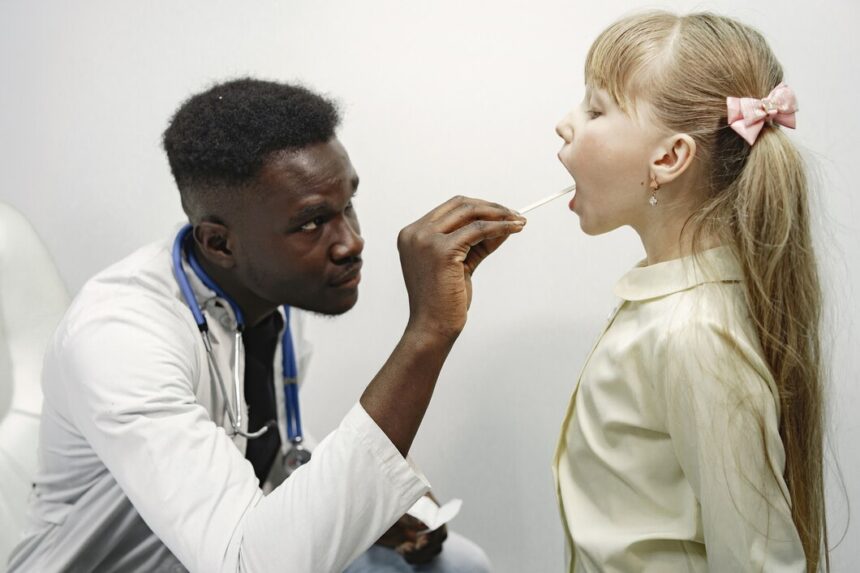Streptococcal pharyngitis, commonly known as strep throat, is a bacterial infection caused by group A Streptococcus bacteria. This condition is particularly prevalent in children, making it essential for parents and caregivers to recognize its early signs and symptoms. Prompt identification can lead to timely treatment and help prevent complications.
1. Sore Throat
One of the most common and noticeable symptoms of strep throat is a sudden and severe sore throat. Children may complain of pain when swallowing or feel a scratchy sensation in their throat. Unlike a sore throat caused by a viral infection, strep throat pain is typically more intense and persistent.
2. Red and Swollen Tonsils
Upon examination, a child’s tonsils may appear red and swollen, often with white patches or streaks of pus. This visible inflammation is a hallmark sign of strep throat, distinguishing it from other types of throat infections. Parents should check for these signs, especially if their child is exhibiting other symptoms.
3. Fever
A high fever, usually over 101°F (38.3°C), is often associated with strep throat. Children may experience chills and general discomfort alongside the fever. Monitoring body temperature can help parents determine if further evaluation is needed.
4. Headache and Abdominal Pain
Strep throat can lead to additional symptoms such as headaches and abdominal pain. Children may complain of a dull or throbbing headache, while some may experience stomach aches or nausea. These symptoms can sometimes be mistaken for other illnesses, making it crucial to consider them in conjunction with a sore throat and fever.
5. Swollen Lymph Nodes
Enlarged lymph nodes in the neck can occur with strep throat. Parents may notice swelling or tenderness when touching the sides of their child’s neck. This symptom indicates the body’s immune response to the infection.
6. Rash
In some cases, children may develop a red, sandpaper-like rash, known as scarlet fever, which can accompany strep throat. This rash typically appears on the neck, chest, and under the arms and is often a sign of a more severe infection.
7. Difficulty Swallowing
Due to the pain associated with a sore throat, children may refuse to eat or drink, fearing that swallowing will cause discomfort. Parents should encourage fluid intake to prevent dehydration, but they should also seek medical attention if their child is struggling to swallow or appears to be in significant pain.
8. Change in Voice
A child with strep throat may exhibit changes in their voice, such as sounding muffled or “scratchy.” This alteration often results from inflammation in the throat and can further indicate the presence of an infection.
Recognizing the early signs and symptoms of streptococcal pharyngitis in children is crucial for timely diagnosis and treatment. If a child exhibits a sore throat accompanied by fever, swollen tonsils, and other related symptoms, parents should consult a healthcare professional for evaluation. Strep throat is treatable with antibiotics, and early intervention can help prevent complications and ensure a quicker recovery. Parents should also be aware of the importance of maintaining good hygiene practices to reduce the risk of infection and transmission among family members and peers.










